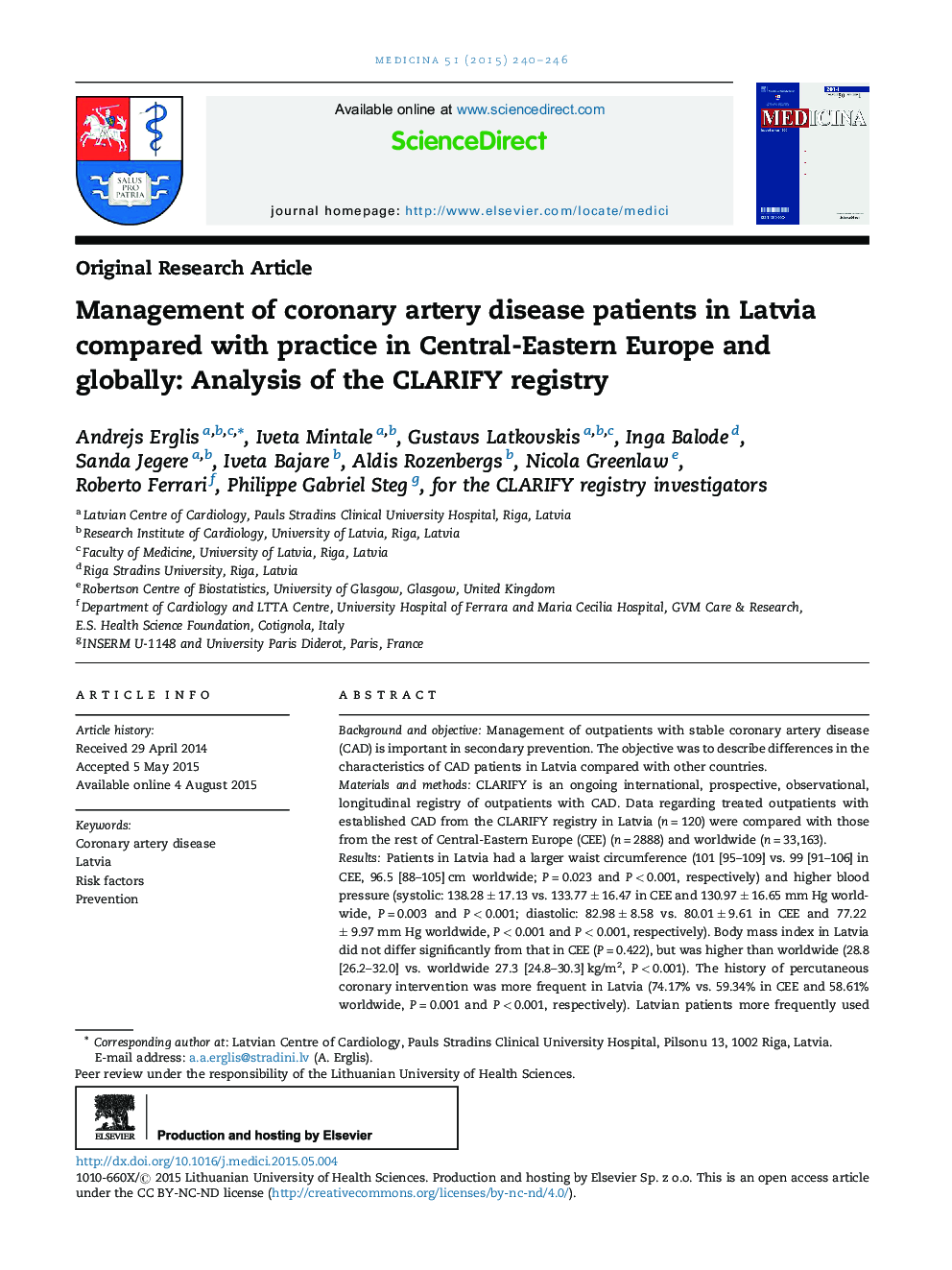| Article ID | Journal | Published Year | Pages | File Type |
|---|---|---|---|---|
| 2680407 | Medicina | 2015 | 7 Pages |
Background and objectiveManagement of outpatients with stable coronary artery disease (CAD) is important in secondary prevention. The objective was to describe differences in the characteristics of CAD patients in Latvia compared with other countries.Materials and methodsCLARIFY is an ongoing international, prospective, observational, longitudinal registry of outpatients with CAD. Data regarding treated outpatients with established CAD from the CLARIFY registry in Latvia (n = 120) were compared with those from the rest of Central-Eastern Europe (CEE) (n = 2888) and worldwide (n = 33,163).ResultsPatients in Latvia had a larger waist circumference (101 [95–109] vs. 99 [91–106] in CEE, 96.5 [88–105] cm worldwide; P = 0.023 and P < 0.001, respectively) and higher blood pressure (systolic: 138.28 ± 17.13 vs. 133.77 ± 16.47 in CEE and 130.97 ± 16.65 mm Hg worldwide, P = 0.003 and P < 0.001; diastolic: 82.98 ± 8.58 vs. 80.01 ± 9.61 in CEE and 77.22 ± 9.97 mm Hg worldwide, P < 0.001 and P < 0.001, respectively). Body mass index in Latvia did not differ significantly from that in CEE (P = 0.422), but was higher than worldwide (28.8 [26.2–32.0] vs. worldwide 27.3 [24.8–30.3] kg/m2, P < 0.001). The history of percutaneous coronary intervention was more frequent in Latvia (74.17% vs. 59.34% in CEE and 58.61% worldwide, P = 0.001 and P < 0.001, respectively). Latvian patients more frequently used aspirin (97.50% in Latvia vs. 89.75% in CEE and 87.64% worldwide, P = 0.005 and P = 0.001, respectively).ConclusionsLatvian CAD patients are well managed in terms of aspirin use and frequency of percutaneous coronary intervention. Control of obesity and high BP is poorer and needs further improvement.
